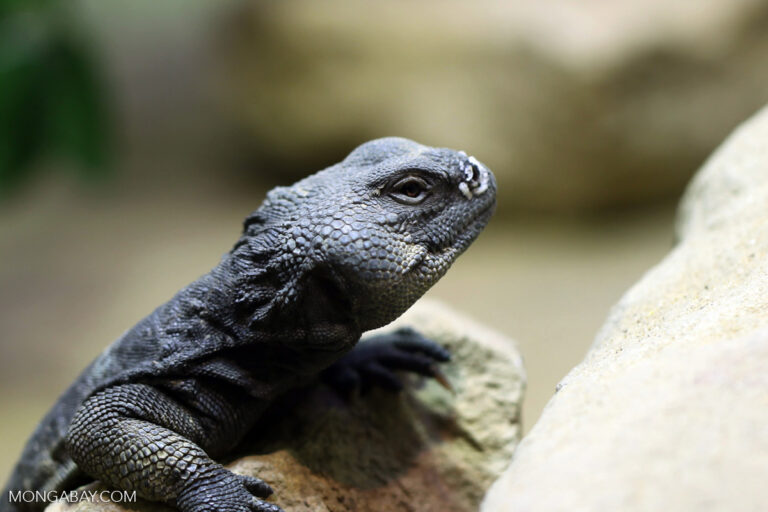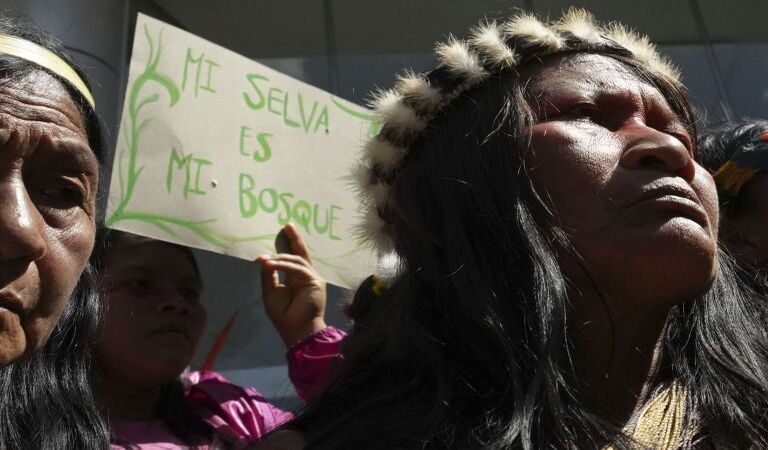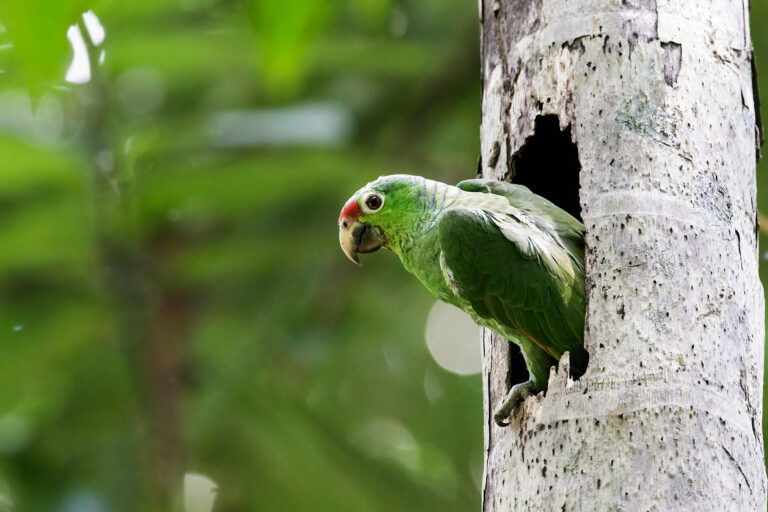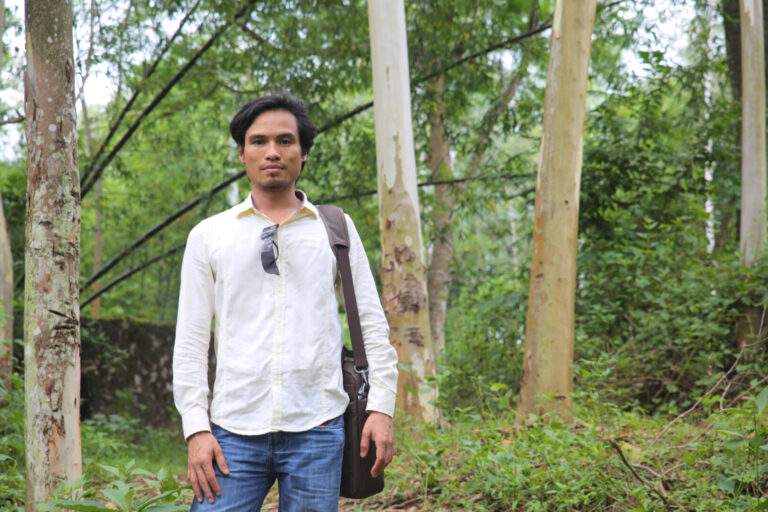- Mongabay has begun publishing a new edition of the book, “A Perfect Storm in the Amazon,” in short installments and in three languages: Spanish, English and Portuguese.
- Author Timothy J. Killeen is an academic and expert who, since the 1980s, has studied the rainforests of Brazil and Bolivia, where he lived for more than 35 years.
- Chronicling the efforts of nine Amazonian countries to curb deforestation, this edition provides an overview of the topics most relevant to the conservation of the region’s biodiversity, ecosystem services and Indigenous cultures, as well as a description of the conventional and sustainable development models that are vying for space within the regional economy.
- Click the “A Perfect Storm in the Amazon” link atop this page to see chapters 1-13 as they are published during 2023.
The soy/maize supply chain is dependent on the existence of privately owned logistical facilities that are essential for receiving, drying and storing soy and feed grains post-harvest. Without silos, the entire harvest would have to be transported immediately to distant processing plants or export terminals.
This would cause inefficiencies in the supply chain and lead to traffic jams on the limited number of highways that connect producing landscapes with export terminals. Silos absorb production during harvest and then permit grains to be dispatched to markets over the following weeks and months.
Soy will ferment and spoil when access to storage is restricted due to hauling distance or long lines at logistical facilities, particularly if the beans have a high water content. Estimates of the loss due to spoilage range from 5 to 6% per year, which in terms of monetary value ranges from $US 200 to 500 million annually for the state of Mato Grosso.

According to Companhia Nacional de Abastecimento (CONAB), Mato Grosso had a total storage capacity of 38.6 million tonnes in 2016, approximately 53 per cent of the combined harvest of soy and maize in 2020. Much of this capacity is owned and operated by one of the four global trading companies: ADM, Cargill, Luis Dreyfus and Bunge.
However, the largest operator is the Amaggi Group, a family-held Brazilian company, which has an integrated supply chain that spans production (280,000 hectares), silos (25 facilities), crushing mills (3) and transportation assets (barges and trucks). Other Brazilian companies that focus on the domestic market compete with these larger companies, as does a Chinese company, COFCO, with silos in Sorriso and San Lucas do Rio Verde, as well as a crushing mill in Rondonópolis.
In addition, the corporations that operate key railroads (Rumo and VLS) have silos at their logistical facilities both in the field and at the port terminals they operate in Santos (SP) and São Luis de Maranhão (MA).
There is currently an initiative organized by the Brazilian soybean association (Aprosoja Brasil) to promote investment in on-farm silos, which would reduce wastage and provide farmers with the option to hold their beans for later sale; this would benefit their bottom line because farm-gate prices are lowest during the harvest season.
In Bolivia, which is the world’s tenth largest producer of soybeans and sixth largest exporter of soybeans, producers likewise depend on the presence of the four global traders, but about half of its production is processed and traded by companies based in Bolivia, Venezuela or Peru.
Crushing mills are the other major soybean industrial asset. As the name implies, these facilities process the beans by crushing them to extract vegetable oil and separate it from soybean meal (also referred to as soy cake). Soy oil is consumed as food or as an ingredient in food products or other consumer goods; in Brazil, it is used as a feedstock for the production of biodiesel. Soy cake, which is high in protein, is used as an ingredient in animal feeds.
Soy is exported as a seed (soybean), as vegetable oil and as soy cake. When exported as a seed, it is processed at its destination, where its two major products are consumed, but when it is processed near the farm, it provides the traders with the opportunity to export the sub-products to different markets.
More importantly, crushing mills create a strategically important opportunity to add value to soy production by transforming it into a product with a higher market value. This is the basis of the poultry and swine industries in both Mato Grosso and Bolivia.
“A Perfect Storm in the Amazon” is a book by Timothy Killeen and contains the author’s viewpoints and analysis. The second edition was published by The White Horse in 2021, under the terms of a Creative Commons license (CC BY 4.0 license).
Read the other excerpted portions of chapter 3 here:

Chapter 3. Agriculture: Profitability determines land use
-
- Agriculture: profitability determines land use October 10, 2023
- Agriculture in the Pan Amazon: Beef production models October 11, 2023
- Industrial infrastructure in the Pan Amazon October 17, 2023
- National versus global markets – beef in the Brazilian Amazon October 19, 2023
- Livestock farming in the Andean Amazon and the rest of the Amazon October 24, 2023
- Intensive agriculture in the Pan Amazon: Soy, maize and other field crops October 25, 2023
- Agriculture in the Pan Amazon: Global markets for soybean and corn crops October 31, 2023
- Agriculture in the Pan Amazon: Industrial infrastructure for grains and cereals November 1, 2023
- Agriculture in the Pan-Amazon: Swine and poultry – Adding value to farm production November 8, 2023
- Oil palm in the Pan Amazon November 9, 2023
- Palm oil cultivation in Colombia, Ecuador, Peru and Brazil November 13, 2023
- What does oil palm require to reach international markets? November 14, 2023
- Biofuels in the Pan Amazon November 21, 2023
- Coffee and cacao in the Pan Amazon November 22, 2023
- Cultivation and processing of Amazonian coffees November 28, 2023
- High quality cacao in Amazonia November 29, 2023
- Local and national food crops in the Andean Amazon December 5, 2023
- Coca in the Amazon – The anti-development crop December 6, 2023














